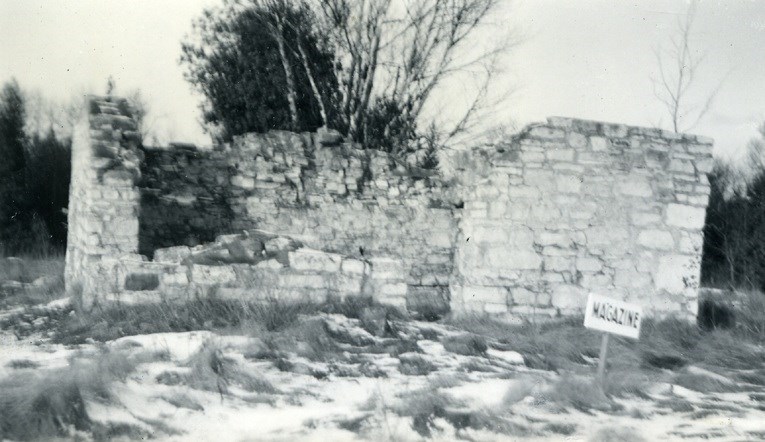This week we bring you one from the vault. This Remember This? article originally ran in November, 2015.
From the Sault Ste. Marie Public Library archives:
*************************
Have you ever wondered about the ruins of the Fort on St. Joseph Island?
After the Treaty of Paris, which formally ended the American Revolutionary War, was signed in 1783, Lord Dorchester, Military Governor of Canada advised that a fortification was needed so that Britain would have a presence in this area.
The United States had built Fort Michilimackinac and Britain felt that they needed to protect this area from a possible future invasion by American soldiers.
St. Joseph Island was chosen because of its proximity to the American fort and the busy navigation routes which were needed for the active fur trade.
 The site of Thessalon had also been considered as a possible site for the new fort but was eventually rejected in favour of St. Joseph Island.
The site of Thessalon had also been considered as a possible site for the new fort but was eventually rejected in favour of St. Joseph Island.
Construction began on the blockhouse in 1797 and on the palisade, guardhouse, kitchen and storehouse the following year.
The powder magazine, bake house and chimney and blacksmith shop were built later.
The British outpost was built on the southernmost point of St. Joseph Island and was once the most westerly outpost of British North America.
The fort’s defenses consisted of a palisade mounting 4 six-pounder cannons and 5 small swivel guns, and it was normally garrisoned by a very small detachment of soldiers.
A fur-trading depot was established at Fort St. Joseph in 1798 and many of their employees built houses and huts nearby.
First Nations people came to the island to meet agents of the British Indian Department and to do business with the fur traders.
After years of strained relations due to foreign and trade policies, including control over the Great Lakes and fur trade, life became more exciting for the garrison stationed at the fort when the United States’ Congress declared war on Great Britain on June 18th, 1812.
Major-General Sir Isaac Brock, military commander of Upper Canada, sent a message to Captain Charles Roberts, commander of Fort St. Joseph, ordering him to prepare for an immediate attack on Fort Michilimackinac.
On July 16th, 1812, Captain Roberts and an army consisting of 45 men from the 10th Royal Veterans Battalion, 160 French Canadian Voyageurs, fur traders and about four hundred Ottawa, Ojibwa, Menominee and Winnebago warriors set off towards the American fort in the North West Company schooner Caledonia, fur traders’ boats and First Nations canoes, arriving at Fort Michilimackinac the next day.
The arrival of Captain Robert’s army took the fort by surprise and the Americans, who had not yet been notified of the declaration of war, had no choice but to surrender.
Following the British victory, most of the garrison of Fort St. Joseph and the fur traders moved to the stronger Michilimackinac, although a skeleton garrison stayed behind at the post.
On July 3rd, 1814, a passing American fleet of 5 naval vessels with several hundred soldiers on their way to recapture Fort Michilimackinac, landed at St. Joseph Island and finding the fort almost deserted, set fire to the fort before travelling on to Fort Michilimackinac.
After the War of 1812 ended, the British repaired some of the surviving structures at the fort and reoccupied the site with a small garrison. However the fort was finally abandoned in 1824.
Fort St. Joseph National Historic Site was designated by the Historical Sites and Monuments Board of Canada in 1923 and the land that the site occupies was transferred to the National and Historic Parks Branch in 1926 and continues to be a popular historical site for visitors today.
*************************
Each week, the Sault Ste. Marie Public Library and its Archives provides SooToday readers with a glimpse of the city’s past.
Find out more of what the Public Library has to offer at www.ssmpl.ca and look for more Remember This? columns here.

